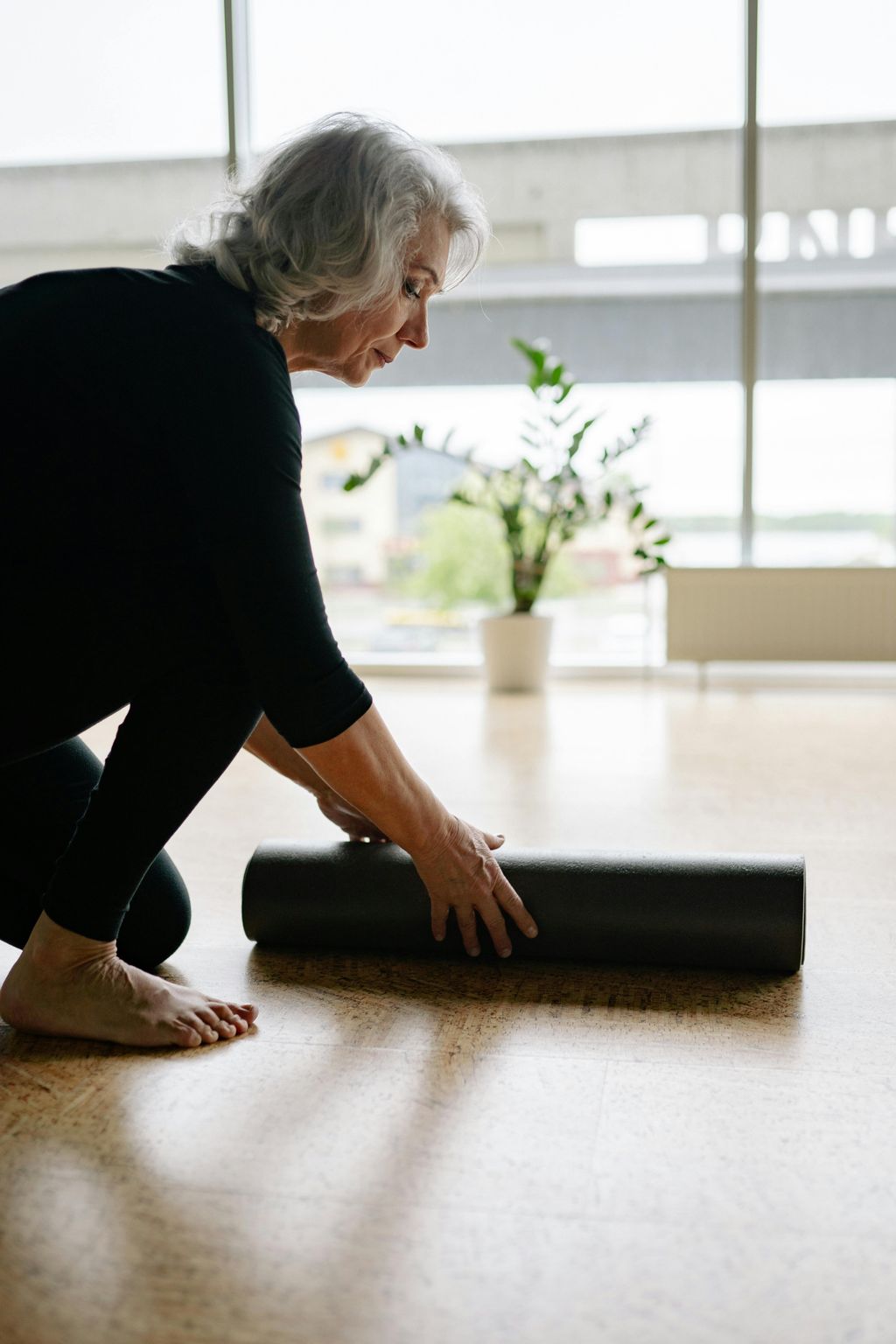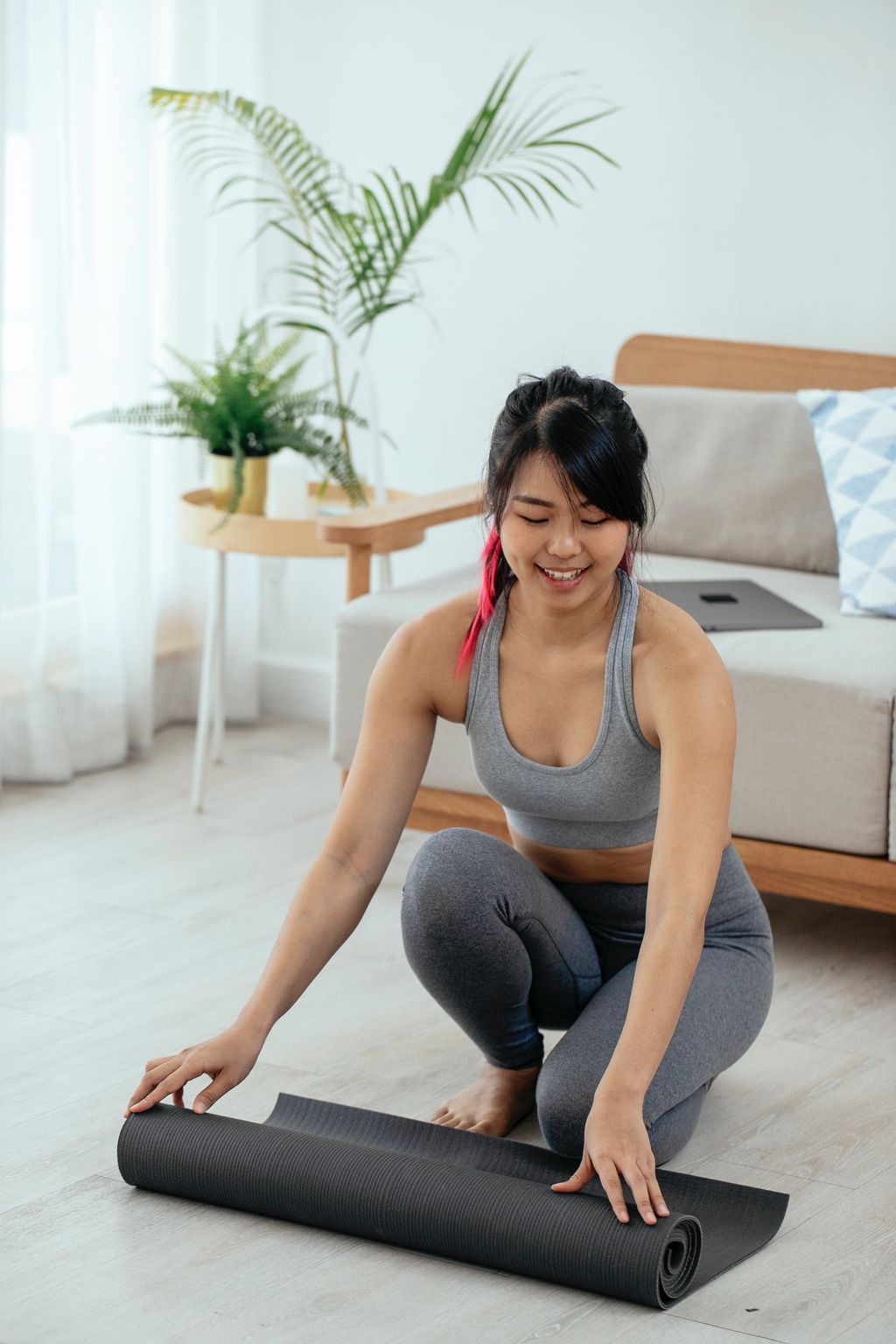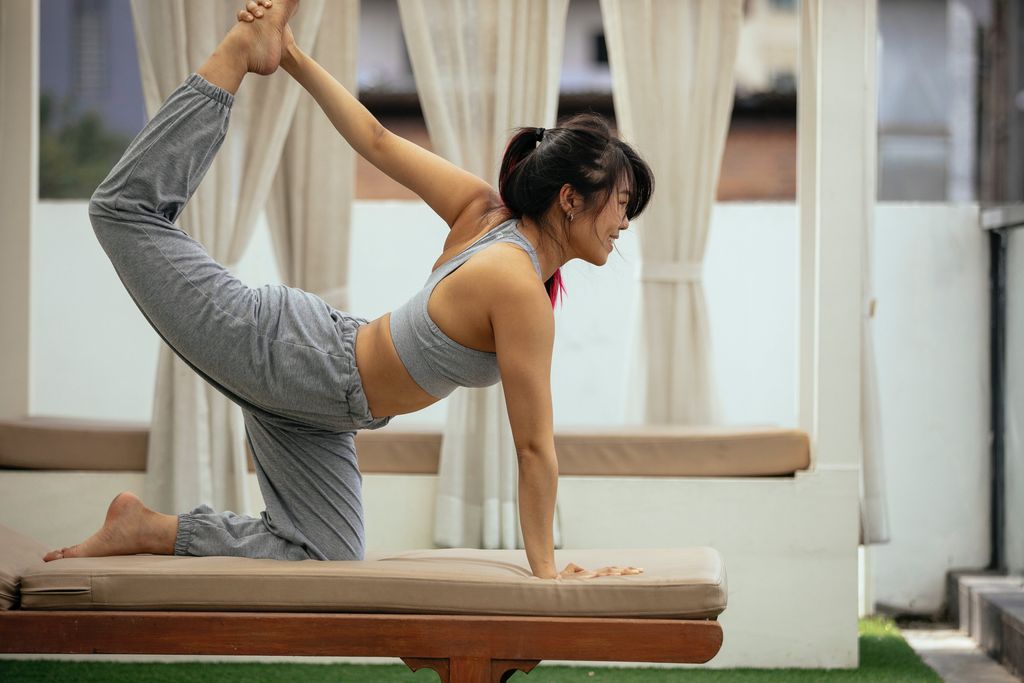
Yoga Mat on Carpet: How to Ensure a Stable Practice
When practicing yoga on carpet, it's important to ensure a stable and secure foundation. This can be achieved by choosing the right yoga mat and taking steps to prepare your carpet. By setting up your mat properly and maintaining stability during your practice, you can enjoy a safe and effective yoga session. Here are some key takeaways to keep in mind:
Key Takeaways
- Choose a yoga mat with the right thickness for added stability.
- Look for a non-slip surface to prevent your mat from sliding on the carpet.
- Opt for a sticky mat that provides better grip and traction.
- Check for durability to ensure your mat can withstand regular use on carpet.
- Clean your carpet before practicing yoga to remove any dirt or debris.
Choosing the Right Yoga Mat
Consider the Thickness
When choosing a yoga mat for carpet, one important factor to consider is the thickness. The thickness of the mat can affect the stability and comfort of your practice. A thicker mat provides more cushioning and support, which can be beneficial if you have sensitive joints or prefer a softer surface. On the other hand, a thinner mat allows for better stability and balance, especially for standing poses. It's important to find a balance between thickness and stability that works for you.
Look for a Non-Slip Surface
When choosing a yoga mat for practicing on carpet, one of the most important factors to consider is the non-slip surface. A non-slip surface ensures that you can maintain stability and prevent any accidental slips or slides during your practice. Look for a mat that is specifically designed to provide excellent grip on carpeted surfaces. This will help you feel more confident and secure in your poses.
Opt for a Sticky Mat
A sticky mat is an excellent choice for practicing yoga on carpet. The sticky surface provides extra grip, helping to prevent your hands and feet from slipping during poses. This type of mat is especially beneficial for dynamic and flowing sequences where stability is crucial. Additionally, a sticky mat can help you maintain proper alignment and balance as you move through different postures. When choosing a sticky mat, look for one that is made from high-quality materials and has a good grip. Investing in a sticky mat will enhance your yoga practice on carpet.
Check for Durability
When choosing a yoga mat for carpet, it is important to check for durability. A durable mat will be able to withstand the pressure and friction of your practice without wearing out quickly. Look for mats made from high-quality materials that are designed to last. Additionally, consider the thickness of the mat as thicker mats tend to be more durable. Durability is key to ensuring a stable and long-lasting yoga practice on carpet.
Preparing Your Carpet for Yoga
Clean the Carpet
Before starting your yoga practice on the carpet, it is important to ensure that the carpet is clean and free from any dirt or debris. Vacuum the carpet thoroughly to remove any loose particles that may interfere with your practice. Additionally, consider using a carpet cleaner or spot treatment to remove any stains or odors from the carpet. This will create a clean and fresh surface for your yoga mat.
Use a Non-Slip Mat
When practicing yoga on carpet, it is essential to use a non-slip mat to ensure stability and prevent any accidents. A non-slip mat provides a secure surface for your yoga practice, allowing you to focus on your poses without worrying about slipping or sliding. Look for a mat specifically designed for carpet use, as it will have features that enhance grip and traction. This will help you maintain proper alignment and stability throughout your practice.
Place a Grip Pad
When practicing yoga on carpet, it can be helpful to place a grip pad underneath your yoga mat. A grip pad provides an extra layer of stability and prevents your mat from slipping or sliding during your practice. It also helps to create a more comfortable surface for your hands and feet, allowing you to focus on your poses without worrying about losing your balance. Consider using a high-quality grip pad that is specifically designed for yoga on carpet, as it will provide the best grip and support.
Remove Obstacles
Before starting your yoga practice on carpet, it's important to remove any obstacles that may hinder your movements. Clear the area of any furniture, toys, or other objects that could get in the way. This will create a safe and spacious environment for your practice.
Setting Up Your Yoga Mat on Carpet
Find a Flat Surface
When setting up your yoga mat on carpet, it is important to find a flat surface. This will ensure stability and prevent any unnecessary movement during your practice. Look for an area in your home that is free from any bumps or unevenness. If needed, you can use a level to check the surface and make adjustments as necessary. Finding a flat surface will provide a solid foundation for your yoga practice.
Align the Mat Properly
When setting up your yoga mat on carpet, it is important to align it properly to ensure a stable practice. Here are some tips to help you align your mat correctly:
-
Start by placing the top edge of the mat parallel to the edge of the carpet. This will provide a straight reference point for alignment.
-
Make sure the mat is centered on the carpet. You can use the width of the carpet as a guide to ensure equal spacing on both sides.
-
Align the mat with the direction of the carpet fibers. This will help prevent the mat from shifting during your practice.
Remember, proper alignment of your yoga mat on carpet is essential for a safe and comfortable practice.
Secure the Corners
When setting up your yoga mat on carpet, it is important to secure the corners to ensure stability during your practice. Here are some tips to help you secure the corners:
-
Use double-sided tape: Applying double-sided tape to the corners of your mat can help keep it in place and prevent it from sliding on the carpet.
-
Place weights or heavy objects: Another option is to place weights or heavy objects on the corners of your mat. This can provide extra stability and prevent the mat from moving.
-
Use yoga mat anchors: Yoga mat anchors are specially designed straps or clips that can be attached to the corners of your mat and anchored to the carpet. They help keep the mat securely in place.
Remember, securing the corners of your yoga mat is essential for a stable and safe practice. By following these tips, you can ensure that your mat stays in place, allowing you to focus on your yoga poses without any distractions.
Smooth Out Any Bumps
Before starting your yoga practice on a carpeted surface, it's important to ensure that the area is as smooth as possible. This will help prevent any discomfort or instability during your poses. Here are a few tips to help you smooth out any bumps on your carpet:
- Use a broom or vacuum cleaner to remove any debris or loose fibers from the carpet.
- Gently press down on any raised areas or bumps with your hands or feet to flatten them.
- If there are stubborn bumps that won't flatten, you can try placing a heavy object, like a book or a yoga block, on top of them for a few hours to help flatten them out.
- Once you've smoothed out the bumps, walk around on the carpet to make sure it feels even and stable under your feet.
Remember, a smooth and even surface is essential for a stable and comfortable yoga practice on carpet.
Maintaining Stability During Your Practice
Engage Your Core
Engaging your core is crucial for maintaining stability and balance during your yoga practice. By activating the muscles in your abdomen, lower back, and pelvis, you create a strong foundation for your movements. To engage your core, imagine pulling your belly button towards your spine and lifting your pelvic floor muscles. This will help you maintain a stable and aligned posture throughout your practice.
Remember: Engaging your core is not about holding your breath or tensing your muscles excessively. It's about finding a balance between stability and ease.
Here are some additional tips to help you engage your core effectively:
- Practice deep belly breathing to connect with your core muscles.
- Focus on maintaining a neutral spine alignment.
- Avoid overarching or rounding your lower back.
- Use props like yoga blocks or straps to support your practice and assist with core engagement.
By incorporating these techniques, you can enhance your yoga practice and experience a more stable and balanced foundation on your yoga mat.
Distribute Your Weight Evenly
When practicing yoga on a carpeted surface, it's important to distribute your weight evenly to maintain stability and prevent slipping. This not only helps you stay balanced but also reduces the strain on your joints.
To distribute your weight evenly, focus on engaging your core muscles. By activating your abdominal muscles, you create a strong center of gravity that allows you to maintain balance throughout your practice.
Additionally, be mindful of your body alignment. Aligning your body properly helps distribute your weight evenly across your feet and hands, providing a stable foundation for your poses.
Remember to listen to your body and make adjustments as needed. If you feel any discomfort or imbalance, take a moment to readjust your weight distribution and find a position that feels stable and comfortable.
By distributing your weight evenly, you can enhance your yoga practice on a carpeted surface and enjoy a stable and safe experience.
Use Props for Support
Using props during your yoga practice can provide additional support and stability. Props such as blocks, straps, and bolsters can help you modify poses, improve alignment, and deepen your stretches. They can also assist in maintaining proper form and preventing injury. Incorporating props into your practice allows you to customize your experience and make it more accessible to your individual needs and abilities.
Focus on Balance
Balance is a key aspect of any yoga practice. It not only helps to improve stability and coordination but also enhances focus and mindfulness. When practicing yoga on a carpet, maintaining balance can be challenging due to the soft and uneven surface. However, with the right techniques and mindset, you can still achieve a stable and balanced practice.
Conclusion
In conclusion, practicing yoga on a carpeted surface can be challenging due to the lack of stability. However, by following the tips and techniques mentioned in this article, such as using a non-slip yoga mat and creating a stable foundation, you can ensure a safe and effective practice. Remember to always listen to your body and make adjustments as needed. With dedication and perseverance, you can enjoy the benefits of yoga even on a carpeted floor.
Frequently Asked Questions
Can I use any type of yoga mat on carpet?
It is recommended to use a yoga mat specifically designed for carpet use. These mats are usually thicker and have a non-slip surface that provides better stability.
Will practicing yoga on carpet damage the carpet?
Practicing yoga on carpet should not cause any damage if the carpet is clean and well-maintained. However, it is important to regularly clean the carpet to prevent dirt and sweat from accumulating.
How can I make sure my yoga mat doesn't slip on the carpet?
To prevent your yoga mat from slipping on the carpet, you can use a non-slip mat or place a grip pad underneath the mat. These provide extra traction and stability.
What should I do if my carpet has bumps or uneven surfaces?
If your carpet has bumps or uneven surfaces, you can try to smooth them out as much as possible before placing your yoga mat. You can also use a grip pad to provide a more stable surface.
Can I use a towel instead of a yoga mat on carpet?
While using a towel on carpet can provide some grip, it is not as stable as using a yoga mat. A yoga mat provides better cushioning and support for your practice.
How often should I clean my yoga mat and carpet?
It is recommended to clean your yoga mat after each use to remove sweat and bacteria. As for the carpet, regular vacuuming and deep cleaning every few months should be sufficient.


